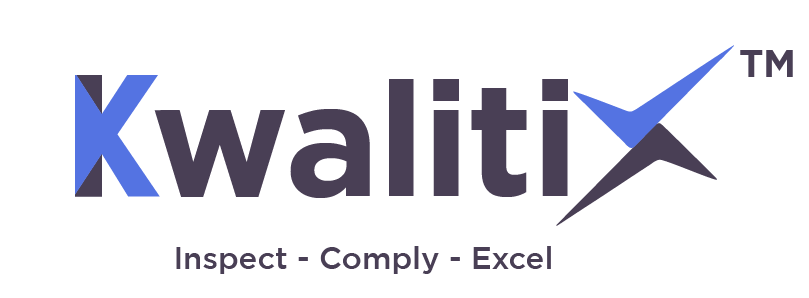Safety is an indispensable pillar of any successful organization, safeguarding the well-being of its most valuable asset – its employees. In the pursuit of a secure working environment, safety inspections emerge as a vital tool, serving as the first line of defense against potential hazards and risks. This blog embarks on a journey to unravel the significance of conducting safety inspections, delving into the multitude of benefits they bestow upon both employees and the organization. By proactively identifying and addressing potential threats, safety inspections not only protect employees from harm but also ensure compliance with legal regulations. We explore the far-reaching impact of a safer workplace, witnessing heightened productivity, reduced costs, and enhanced employee morale. As we delve into the intricacies of safety inspections, we uncover the keys to fostering a culture that prioritizes safety, empowering organizations to thrive in a secure and flourishing environment.
At the forefront of these crucial endeavors stands KwalitiX, a trusted leader in conducting top-tier audits and inspections. As a pioneering force in the industry, KwalitiX plays a pivotal role in bolstering safety standards and regulatory compliance within organizations. Through the expertise of KwalitiX’s seasoned professionals, organizations gain invaluable insights into potential hazards and non-compliance, enabling proactive measures for risk mitigation.
Understanding the Importance of Safety Inspections: Safety inspections are systematic assessments conducted to identify potential hazards, risks, and non-compliance with safety regulations within a workplace. The primary objective is to prevent accidents, injuries, and illnesses that may arise from unsafe conditions or practices. By conducting regular safety inspections, organizations can proactively address potential threats and promote a culture of safety among their workforce.
• The Benefits of Safety Inspections:
1. Protecting Employees: The most significant advantage of safety inspections is the protection of employees. Identifying and
Rectifying hazards promptly reduces the likelihood of accidents, injuries, and long-term health issues, thus fostering a safer and healthier work environment.
2. Legal Compliance: Safety inspections help organizations adhere to local, state, and federal safety regulations. Moreover, Compliant businesses avoid penalties and legal consequences, which can damage their reputation and finances.
3. Enhanced Productivity: A safe workplace instills confidence in employees, leading to increased productivity. When workers feel secure in their surroundings, they can focus on their tasks without distractions caused by safety concerns.
4. Reduced Costs: Preventing accidents and injuries through safety inspections can significantly lower workers’ compensation claims and medical expenses. Additionally, it minimizes equipment damage and production downtime, saving the organization substantial costs.
5. Improved Employee Confidence: Safety inspections create a sense of security and trust among employees. When workers feel confident that their workplace is regularly inspected for safety hazards and risks, they are more likely to have peace of mind while performing their duties. This increased confidence can lead to higher job satisfaction and lower levels of stress among employees.
6. Enhanced Organizational Reputation: A strong commitment to safety demonstrated through regular safety inspections can enhance the organization’s reputation in the industry and the community. Moreover, customers, clients, and partners are more likely to trust and prefer businesses that prioritize the well-being of their employees and stakeholders.
7. Prevention of Occupational Illnesses: Safety inspections not only focus on immediate physical hazards but also on potential health risks. By identifying and mitigating factors that could lead to occupational illnesses, such as exposure to harmful substances or repetitive strain injuries, safety inspections contribute to maintaining a healthier workforce.
8. Regulatory Incentives: In some regions, government agencies offer incentives to businesses that demonstrate a strong commitment to workplace safety through regular inspections. Therefore, these incentives may include reduced insurance premiums, tax benefits, or recognition in safety awards programs.
9. Higher Employee Retention: A workplace that prioritizes safety and invests in safety inspections is more likely to retain employees. Moreover, workers are more inclined to stay with an organization that shows genuine concern for their well-being and actively takes steps to ensure a safe and healthy working environment.
10. Emergency Preparedness: Safety inspections often include checks on emergency equipment and evacuation procedures. Ensuring that these systems are functional and well-understood by employees can significantly improve the organization’s response to emergencies, minimizing potential damage and injuries.
• Components of an Effective Safety Inspection:
1. Planning and Preparation: Before conducting a safety inspection, a well-defined plan should be in place. Determine the scope, objectives, and frequency of inspections. Assign responsibilities to qualified personnel who possess the necessary expertise to identify potential hazards.
2. Walkthrough Assessment: During the inspection, personnel should conduct a thorough walkthrough of the workplace, examining all areas and equipment. Look for hazards such as slippery floors, exposed wiring, malfunctioning machinery, and improperly stored chemicals.
3. Documentation: Proper documentation of safety inspection findings is crucial. Record all observations, hazards identified, and corrective actions taken. This documentation is valuable for tracking progress over time and demonstrating compliance during audits.
4. Employee Involvement: Moreover, encourage employees to participate actively in safety inspections. They are the ones working in the environment daily and can provide valuable insights and feedback on potential risks they encounter.
• Implementing Corrective Actions:
Once hazards and risks are identified, it is essential to take immediate corrective actions. Prioritize the most critical issues and develop an action plan to address them promptly. Engage all relevant stakeholders and allocate resources accordingly to ensure the successful implementation of safety measures.
• Continual Improvement:
Safety inspections should not be a one-time event but rather a part of an ongoing process. In addition, regularly review and update safety policies and procedures based on inspection findings and industry best practices. Encourage open communication about safety concerns and foster a culture that prioritizes safety throughout the organization.
Performing safety inspections is a crucial part of protecting people and reducing risks at work. Organizations can build a safer and more effective working environment by comprehending the significance of safety inspections, appreciating their advantages, and putting best practices into action. In the end, putting safety first results in happier and healthier workers, better productivity, and a positive reputation for the business. Inspecting your workers is an investment in their long-term health and success, not a legal requirement.


проверить соут лаборатория труда соут
Ремонт Квартиры под ключ в Алматы – ТОО “Ваш-Ремонт” помжет Вам от идеи до реализации. Надежно, качественно и в срок. Мы предлагаем полный спектр услуг: от дизайна интерьера до отделочных работ любой сложности. Доверьте свой ремонт опытным специалистам и получите идеальный результат.